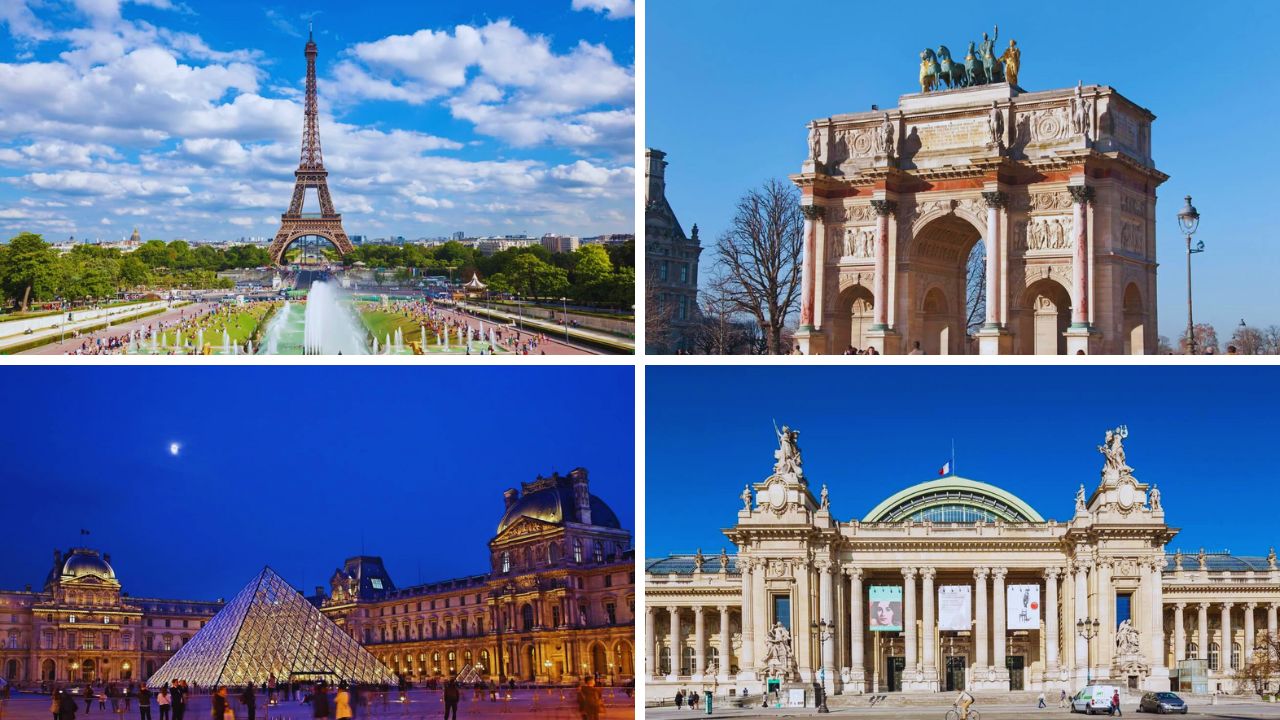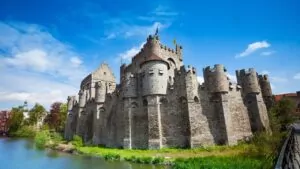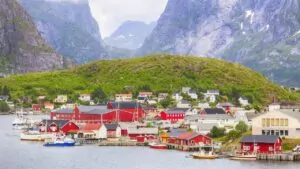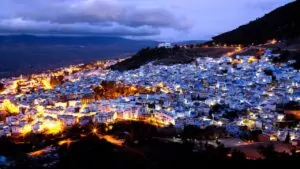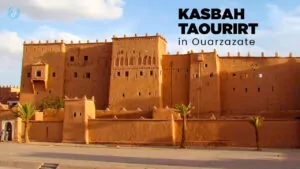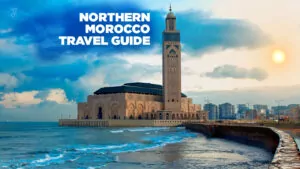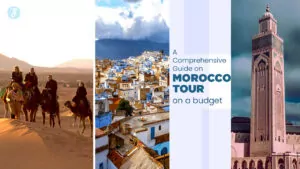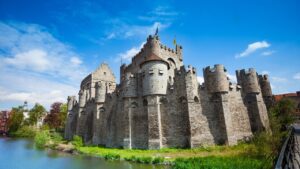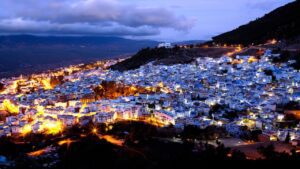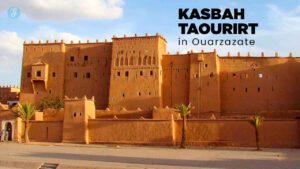It can feel like there are little else but famous landmarks in Paris, especially amid the regal, tree-lined avenues and cobbled lanes of the French capital’s historic center.
This could have something to do with how the City of Light, with its chic style, peerless cuisine, and dramatic history, has achieved a kind of cultural preeminence in our collective imaginations. Or maybe it’s a straightforward Gallic penchant for flamboyance.
And while it’s extraordinary how familiar we feel, even before visiting, about places such as the Eiffel Tower or Notre-Dame Cathedral, what’s even more remarkable is seeing these famous monuments in Paris woven into the urban tapestry.
Small details, such as the way light streams through the glass pyramid of the Louvre or the hue of the Seine on a spring afternoon, captivate us.
Charge up your camera battery and prepare to come face-to-face with extraordinary cultural treasures that truly live up to their billing.
Here is a list of 15 famous landmarks in Paris.
1. Eiffel Tower
The Eiffel Tower is one of the world’s best-known sights. This iron structure is the highest point in the low-rise center of Paris, elegantly planted in the Champs de Mars public park.
Gustave Eiffel designed his wrought-iron structure to serve as the centerpiece of the 1889 Paris World’s Fair. Upon its unveiling, it rose to become the world’s tallest building. The plan was to have the tower stand only until 1909, but its popularity and usefulness as a radiotelegraph post ensured its permanence.
Read More: Safest Countries in the world 2024
Be sure to book in advance if you intend to ride the elevators (or take the stairs) to the tower’s various viewing platforms. The Michelin-starred menu at the Jules Verne restaurant on the tower’s second floor may distract you from the view of the city’s elegant urban planning.
2. Arc de Triomphe
Built to commemorate the success of the French at the Battle of the Three Emperors—Napoleon’s greatest military success—the Arc de Triomphe is much more than a decorative roundabout at the northern end of Avenue des Champs-Élysées.
The world’s largest triumphal arch, perhaps the country’s most potent patriotic symbol, took 30 years to build, modeling itself after the Arch of Constantine in Rome.
Famous victories and the names of French generals adorn the arch, beneath which lies the grave of an “unknown soldier.” For far-reaching views across the rooftops, climb 300 steps to the viewing platform at the top of the arch, while cars and scooters circle below.
3. The Louvre
The Louvre is an intrinsically Parisian building and brand. Architect I. M. Pei’s modern glass pyramid, enclosed within the baroque embrace of a former 12th-century fortress, is a breathtaking juxtaposition to witness in person. On your first visit, you might have your heart set on seeing the Mona Lisa.
It’s an achievable goal, but bear in mind that the viewing space in front of the world’s most famous painting can become crowded. If your schedule allows, consider an evening visit on Wednesday or Friday instead.
The world’s largest museum has more than enough alternative treasures with which to slake your cultural thirst. There’s the Venus de Milo, the atmospheric Raft of the Medusa, or the imposing Winged Bulls from Mesopotamia.
4. Grand Palais
The Grand Palais des Champs-Élysées, built for the 1900 Universal Exhibition, is an imposing art nouveau structure with a striking resumé. In the past, it was a WWI military hospital, a Nazi truck depot, and the headquarters of the French resistance.
Read Also: Things to Do in Basel, Switzerland
Today, it continues to serve as an event space, housing a science museum and the captivating exhibitions of the National Galleries beneath Europe’s largest steel and glass ceiling.
5. Notre-Dame Cathedral
Notre-Dame Cathedral is a 12th-century French Gothic edifice brooding on an island in the Seine. Religious and non-religious alike revere its instantly recognizable rectangular towers, profusion of flying buttresses, and spectacular rose windows.
The French Revolution ransacked the cathedral’s interior. However, after the outpouring of feelings in the aftermath of the devastating fire on April 15, 2019, it’s clear that the cathedral remains, for many, intrinsic to their sense of French national identity.
6. Opera Garnier
The Paris Opera built the Opera Garnier in the 19th century as its home. In 1989, the opera moved to the more up-to-date Bastille Opera House, leaving the Opera Garnier to officially change its name to the Palais Garnier and become more of a home for ballet.
Take a self-guided tour of this stunning interior, featuring Belle Epoque galleries, a grand staircase, and a horseshoe-shaped auditorium featuring a Marc Chagall ceiling.
7. Place de la Concorde
Place de la Concorde is one of the city’s main public squares, located at the eastern end of Les Champs. The French Revolution selected it as the site for the public executions of the King and Queen of France, among many others. They renamed the square Place de la Concorde as a symbol of peace.
Its original regal swagger remains, with statues at each of the square’s eight angles, monumental fountains, and the yellow granite obelisk centerpiece that once stood at the entrance to Egypt’s Luxor Temple.
8. Champs-Élysées
The Avenue des Champs-Élysées is both a stately thoroughfare and close to a mile of supreme retail therapy. As the flagship address for retail super-brands, it plants the flag for Paris as the best shopping city in Europe.
Under the plane trees, you’ll find every major luxury brand represented. Les Champs is also a gathering place for citizens, a Tour de France finishing line, a New Year’s Eve singalong spot, and a World Cup-winning frenzy. If you’re there on the first Sunday of the month, Les Champs is also blissfully car-free for the day.
9. River Seine
The River Seine is more than just a landmark that Paris is famous for. Its presence attracted the proto-Parisians to the site when Place de la Concorde was just a swampy patch of grass. Today, this broad, silvery-green conduit of history and sleek restaurant boats divides Paris into the Left and Right Banks.
UNESCO has designated the eight miles of river within the city boundaries as World Heritage. For the citizens of Paris, its spacious riverside walkways offer a calm respite from the capital’s busy streets.
10. Basilica of the Sacré-Coeur
The exotic white domes of the Basilica of the Sacré-Coeur (sacred heart) vie with the Eiffel Tower as the city’s most eye-catching landmark. The Sacré-Coeur caps the trendy Montmartre neighborhood’s bistro-busy lanes.
Explore the interior, where France’s largest mosaic (5,166 square feet) will captivate you, or ascend the dome. For many, though, the panoramic view of Paris from the top of the 222 steps is all they need.
11. The Centre Pompidou
President Pompidou established the Centre Pompidou as a showcase for Paris’s contemporary art. Inside is as busy as the exterior, with a cinema, a major public library, and a program of concerts. T
The permanent collection of modern art is one of Europe’s largest, with important works by Man Ray, Duchamp, and Picasso. Head up to the sixth-floor terrace for one of the best views in Paris.
12. Musée d’Orsay
The Musée d’Orsay is one of the gorgeous buildings left over from the Paris Universal Exhibition of 1900. It is one of Paris’ most famous monuments and almost as instantly recognizable as the Louvre in France.
If you’re a fan of Impressionism, then the d’Orsay should be your first stop. Under its high-ceilinged, curving corridors, you’ll find names like Renoir, Manet, and Van Gogh.
13. Pont Alexandre III
The Pont Alexandre III connects the Grand Palais and the Invalides military history complex. Golden nymphs, cherubs, and winged horses adorn the bridge. Designed to harmonize with the architecture of the Grand Palais, it is among the most famous landmarks in Paris.
The Pont Alexandre III has earned numerous movie credits, and its historical and cultural importance has led it to be designated a national historic monument.
14. Luxembourg Gardens
The Luxembourg Gardens, or Jardin du Luxembourg, is a beautiful public park in the 6th arrondissement. Marie de’ Medici, the widow of King Henry IV of France, created it in 1612 for her new residence, the Luxembourg Palace.
The gardens are known for their picturesque lawns, tree-lined promenades, flowerbeds, and model sailboats on their octagonal Grand Basin. The Medici Fountain, built in the early 17th century, is a popular attraction within the gardens.
15. Sainte-Chapelle
Sainte-Chapelle is a royal chapel in the Gothic style within the medieval Palais de la Cité, the residence of the Kings of France until the 14th century. King Louis IX commissioned it to house his collection of Passion relics, including the Crown of Thorns.
The chapel is renowned for its stunning stained glass windows, which cover 15 windows, each 15 meters high. These windows depict 1,113 scenes from the Old and New Testaments.
Experience all of these famous landmarks on a trip to Paris. From the avenues of the City of Light to the charming neighborhoods, Paris is one of the world’s most enchanting destinations.

